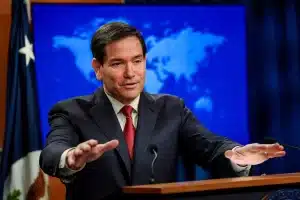India seeks to reform its military amid new security threats

The top brass of the Indian military met last week to discuss massive reforms, which are aimed at integrating the capabilities of the army, the navy and the air force.
In a plan backed by Prime Minister Narendra Modi’s government, the current 17 single-service units will come under five “theater commands” in a bid to establish a unified approach to deal with future conflicts.
However, reports of discord between the service’ chiefs emerged as they squabbled over the structure and ambit of the unified commands.
Earlier this month, Chief of Defense Staff General Bipin Rawat and head of the air force, Rakesh Kumar Singh Bhadauria, reportedly exchanged harsh words over the proposed reforms.
On July 2, Rawat, who is tasked with creating “theater commands” said that the Indian air force remains a “supporting arm” of the armed forces. There are reports that the air force does not agree to the unified command reform.
Reforms are ‘long overdue’
The timing of the proposed reform is crucial, as the Indian military faces challenges from multiple fronts, including border tensions with China and Pakistan.
“Reforms are long overdue. The Indian military is operating under old structures and old ideas that won’t be effective should a new conflict emerge,” Arzan Tarapore, a South Asia research scholar at Stanford University, told DW.
Amit Cowshish, a former financial advisor to the Ministry of Defense, said security threats to India are continuously morphing into new forms.
“The boundary dispute with China has acquired a new dimension as was seen in Ladakh last year. China is also increasing its forays into the Indian Ocean and has been making overtures to India’s neighbors,” Cowshish told DW.
Threats from advancing technology
The Indian military also faces challenges from growing advancements in technology, says Vivek Chadha, a retired colonel and a research fellow at the Manohar Parrikar Institute for Defense Studies and Analyses. According to Chada, drones are now considered low-cost options.
“Similarly, the kind of investment one needs to do to carry out a cyber attack is miniscule as compared to conventional weapons systems,” he added.
Tarapore said “drones are just the tip of the iceberg.”
“Far more salient and long-lasting threats in decades to come are going to be the huge advancements in information technology, as it relates to war. Everything that can be affected by, improved by artificial intelligence and machine learning,” Tarapore told DW.
India’s role in regional security
In the years to come, the Indian military could also be called to assume a variety of new missions in South Asia.
“India acting as a net security provider in the region, basically non-combat roles for the military, including humanitarian assistance, disaster relief and maintaining conventional deterrence across the region,” Tarapore said.
He added that although India already undertakes similar functions, there is going to be an increasing demand from the region and from partners like the US and Australia to carry out more such missions.
India could also be expected to play a key role in counter-coercion.
“India has previously designed its military to defend its land increasingly for a variety of reasons. That is going to recede in frequency as a threat and what’s going to increase in frequency is the risk of coercion both against India and against third parties in the region,” Tarapore said.
A potential civil war in neighboring Afghanistan could also have repercussions for India’s security, particularly in the Kashmir region.
“Regardless of whether Pakistan is able to work out some equation with the Taliban, it will have a spin-off effect in India. India is very unlikely to come close to the Taliban,” Cowshish said.
“There may be some kind of a truce, but I don’t think India can subscribe to the kind of ideology that the Taliban have. At some point of time, the Taliban could directly or indirectly start spreading their tentacles in Kashmir,” Cowshish added.
Revamping military equipment
Military analysts warn that some of the old structures of the Indian military might not be well equipped should the country be confronted with future conflicts.
“While the army is very well-prepared to fight a conventional war or even for that matter fighting terrorism, insurgency, as it has now done for almost 70 years. Is it as well prepared to fight these nascent threats that are emerging on the horizon?” Chadha said.
From the need for better equipment to the lack of an overarching security strategy, India’s military are in need reforms, Cowshish said.
“The bulk of the equipment and platforms that the Indian armed forces have are obsolete… It is important to modernize the armed forces…The foremost challenge is the absence of a financially viable joint plan for enhancement of military capabilities,” Cowshish said.
India must ‘catch up’ to China
The theaterization reform is being seen as a start for India but Beijing, one of India’s biggest adversaries, is already much ahead of New Delhi when it comes to these big-ticket reforms, Chadha said.
“They (China) have started speaking about the importance of the maritime domain, the integration of the armed forces, and the importance of cyber issues,” he said.
“They are world leaders as far as drone technology is concerned…In the domain of technological advancements like Artificial Intelligence or blockchain, multiple areas which are going to impact warfare in the future… India has a lot of catching up to do,” Chadha said.
SOURCE: DW News
Latest Thailand News
Follow The Thaiger on Google News:


























